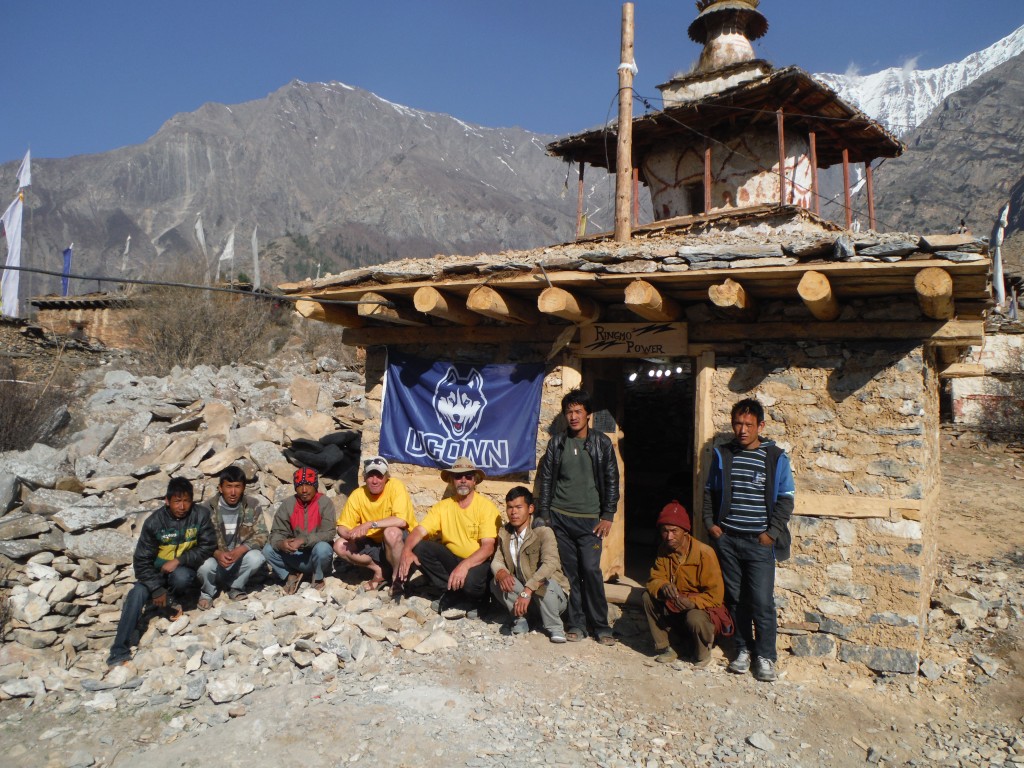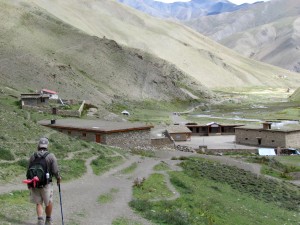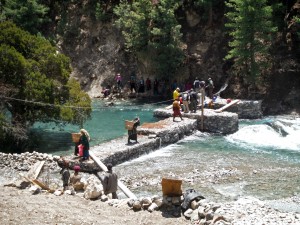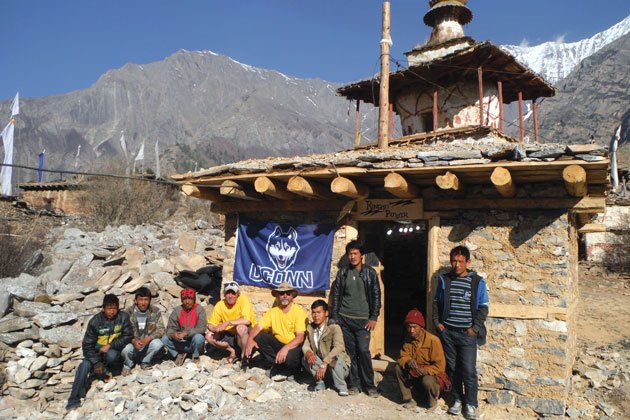This article was first published in the Fall 2014 print edition of UConn Magazine. To read more stories like this, visit s.uconn.edu/fall14 or download UConn Magazine’s free app for iPads.

For Peter Werth III ’80 (CLAS), trekking across some of the most rugged, geographically isolated terrain on the planet could not be more gratifying. Two years ago, Werth founded Himalaya Currents, a nonprofit devoted to supporting sustainable energy and water projects in an impoverished, remote region of Nepal. The organization and its partners have installed numerous hydroelectric and solar- and wind-powered hybrid units, as well as a pumping system to deliver clean drinking water to local residents. Prior to starting Himalaya Currents, Werth worked in the pharmaceutical industry and with the Werth Family Foundation. To learn more, visit himalayacurrents.org.
1. Why did you first travel to Nepal, and what were your impressions?
My first trip to Nepal took place in 2012. I was going to see the progress of a project the Werth Family Foundation partially funded with the World Wildlife Fund [WWF]. This was a micro-hydroelectrical project in a remote region of Nepal in the Himalayan Mountains called Dolpa. The area is a three days’ hike from the nearest dirt-strip airport and a seven days’ hike from the nearest road.
2. What are the people like?
During my first trip to Dolpa, I was amazed at their kind, gentle nature. They shared everything they had and openly embraced me as one of their own. The sense of community was amazing. They are extremely hard-working. They live on the margin of survival, and therefore everything they do is with a purpose. They are very religious, and look to the stars, nature, and the lamas [priests] for signs of good karma. I nd it hard to understand how people that live such a hard life can be so gentle and kind inside. These villages are at altitudes of 11,000 to 14,000 feet. Just walking up a hill for me is a struggle. The villages are isolated from November to April by avalanches and heavy snows, and to get to these places one must cross 18,000-foot passes — not an easy task!.
3. Why did you decide to found Himalaya Currents?
Once I lived in the village, I knew that I wanted to do more for these people who really have no advocates for their needs. I founded Himalaya Currents to be a focused NGO [nongovernmental organization] that would deal with energy and resource problems specific to the Himalayan environment. The Werth Family Foundation covers a broad spectrum of causes that we support in the New England region, so I wanted to carve out an area where my personal passion wouldn’t eclipse what the foundation does.

4. How do you determine which projects to fund?
Projects are decided by meeting with villagers at community gatherings. They discuss what they want, and then we come back to them with possible solutions. You can be in a village a couple days and just observe … what the biggest problem they face is. It usually revolves around energy, water, or sanitation. If the project is sustainable, environmentally friendly, and can be handed over to the village, I am good with that. When I hike out of the village, the project is 100 percent theirs — they maintain and run it once we’re gone.
5. What’s the political situation in Nepal? Has that posed a challenge?
After the Maoists assumed power [in 2008], there was incredible in-fighting. Basically, if you wanted something, you held a strike and closed down roads, or even entire districts, until the government met your demands. It led to a system where the country was being held hostage by in-fighting all the time. The first Constitutional Assembly failed miserably to write a constitution, so the government was ineffective. It became very apparent that if you needed to put in a school, a health clinic, or lights, you needed to do it yourself. However, the new Constitutional Assembly is back in session, and it looks like the gridlock is easing. But maneuvering through the bureaucratic system there is always a challenge — the rules and regulations seem to change all the time.
6. I understand you’ve been able to involve UConn students in your projects. What have the students done?
Two UConn engineering students were involved in the Saldang Solar Hybrid unit that we completed last year. They mentored and helped design and fabricate the unit with high school students from Hartford Public High School. Then one of the students, Pravesh [Mallik ’15 (ENG)], was flown to Nepal — he’s Nepali — and arranged for the chemicals needed for the special batteries we used for this system.

7. You partner with the World Wildlife Fund on all of your projects in Nepal. What do they bring to the table?
The WWF is invaluable for me in navigating all the governmental rules and regulations. If we agree that a project ts both our visions, then they assist with permits and logistics. At the end of the day, we essentially do these projects together.
8. What are your plans for the organization’s future?
Ideally, I would like to optimize and standardize a wind/solar hybrid system and a small hydrokinetic system for distribution throughout the Himalayas. This would involve working with NGOs like USAID [U.S. Agency for International Development] and other agencies.
9. What has been your most rewarding experience with Himalaya Currents?
The most rewarding was a trip this May, where we lit up the entire village of Ringmo. To have every family, around 200 people, come to me and personally shake my hand and smile was amazing! It’s amazing what a light can do.
10. What would you say to those who want to make a difference in developing countries like Nepal?
If you want to make a difference, just do it — no one will hand you a road map. You need to be prepared to take some knocks and hear a lot of “no’s,” but if you ask the right questions, you will and people who would love to have your help. The biggest thing is to have an open mind.



